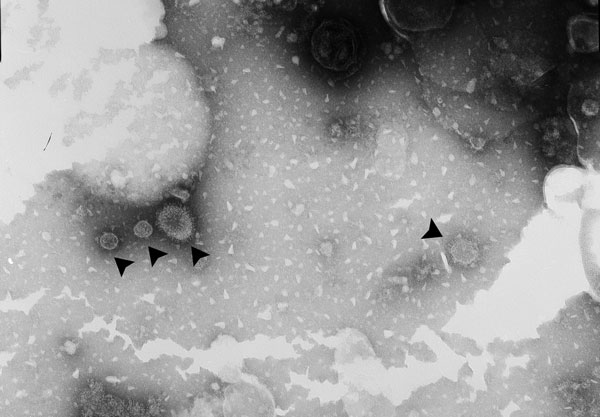Volume 20, Number 3—March 2014
Dispatch
Influenza A(H1N1)pdm09 Virus Infection in Giant Pandas, China
Figure 1

Figure 1. . Negative-staining electron micrograph image showing influenza A(H1N1)pdm09 virus particles (arrowheads) in allantoic fluid supernatant collected from specific pathogen free eggs after injection with a nasal swab sample collected from a giant panda in China. Original magnification ×40,000.
1These authors contributed equally to this article.
Page created: February 19, 2014
Page updated: February 19, 2014
Page reviewed: February 19, 2014
The conclusions, findings, and opinions expressed by authors contributing to this journal do not necessarily reflect the official position of the U.S. Department of Health and Human Services, the Public Health Service, the Centers for Disease Control and Prevention, or the authors' affiliated institutions. Use of trade names is for identification only and does not imply endorsement by any of the groups named above.